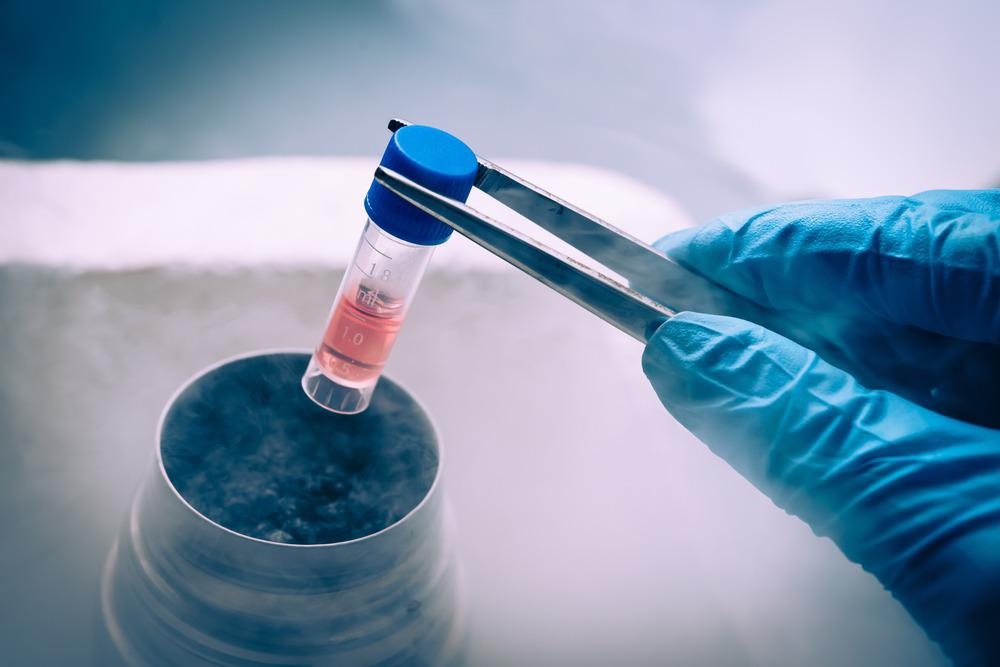
Image Credit: Elena Pavlovich/Shutterstock.com
Headed by Professor Horacio Espinosa, the team created a new version of its Nanofountain Probe Electroporation (NFP-E), a platform used to supply molecules into single cells with the help of electricity. The improved technique exploits artificial intelligence (AI) to perform cell engineering operations like cell probe detection and nuclei localization.
Other processes like probe-to-cell contact detection, probe motion, and electroporation-mediated delivery of foreign cargo into single cells are also automated, reducing user intervention.
NFP-E can handle small starting samples without any significant cell loss in the entire protocol. This is an advantage over other cell engineering methods such as bulk electroporation, which require millions of cells and lead to significant cell losses.
Professor Horacio Espinosa, Study’s Corresponding Author and James N. and Nancy J. Farley Professor in Manufacturing and Entrepreneurship, McCormick School of Engineering, Northwestern University
“The automated NFP-E, combined with its ability to selectively target and manipulate single cells in micro-arrays, can be useful in fundamental research, such as deciphering intracellular dynamics and cell-to-cell communication studies as well as biological applications such as cell line generation,” Professor Espinosa added.
Espinosa and graduate students Cesar A. Patino, Prithvijit Mukherjee, and Nibir Pathak reported their findings in the March 21st issue of the journal Small.
“Genetic manipulation of human-induced pluripotent stem cells (hiPSCs) by introducing exogenous cargo has a wide range of applications in disease diagnostics, therapeutic discovery, and regenerative medicine,” said Mukherjee, a PhD student in the Espinosa lab who is joining the microfluidics group at Illumina.
Probe-based, microfluidic approaches, such as NFP-E, employ atomic-force microscopy tips or hollow nanopipettes to supply materials into cells. NFP-E also enables scientists to selectively control cells of interest, work with a tiny amount of starting samples, and supply both plasmids and proteins in several human and animal cell types with dosage control.
“The challenge with probe methods, however, is that they require manual operation and produce low throughputs, making them unsuitable for common cell engineering workflows,” said Patino, a PhD student in the Espinosa group.
Selective cell manipulation at sufficient throughput is challenging. Most methods either provide high throughput at the expense of individual cell control or sacrifice throughput for single cell selectivity and control.
Professor Horacio Espinosa, Study’s Corresponding Author and James N. and Nancy J. Farley Professor in Manufacturing and Entrepreneurship, McCormick School of Engineering, Northwestern University
This new study modifies that.
The automated NFP-E designed by the research team allows selective cell engineering at higher throughputs compared to manual probe-based techniques while also decreasing experimental variability and allowing more efficient creation of hiPSCs.
Using the automated NFP-E, Espinosa and his team supplied clustered regularly interspaced short palindromic repeats (CRISPR) RNP to hiPSCs for effective knockout of genes in various culture formats: micro-patterns, culture plates, and micro-wells arrays.
The automated creation of cells in micro-arrays using the NFP-E has possible applications like isogenic cell line generation from single cells and analyzing dynamic cellular processes such as cell-cell communication and intracellular signaling cascades.
Espinosa and colleagues will subsequently work to automate NFP-E’s complete workflow, which comprises steps such as cell tracking, switching probes, automated cell imaging, and media exchange for cell culture.
The idea is to establish a fully automated cell line generation workflow using the combination of the NFP-E and the micro-well arrays. The AI can be further trained to recognize and target specific cell types in multi-cell co-cultures. This can be useful in understanding dynamics such as disease progression or cell communication.
Professor Horacio Espinosa, Study’s Corresponding Author and James N. and Nancy J. Farley Professor in Manufacturing and Entrepreneurship, McCormick School of Engineering, Northwestern University
Journal Reference:
Mukherjee, P., et al. (2022) Deep Learning-Assisted Automated Single Cell Electroporation Platform for Effective Genetic Manipulation of Hard-to-Transfect Cells. Small. doi.org/10.1002/smll.202107795.